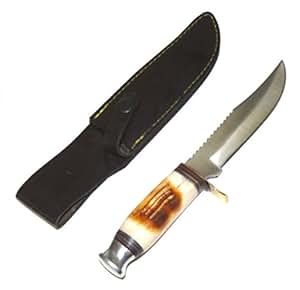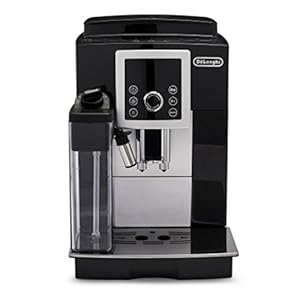Sharpening serrated hunting knives: it’s a task that often feels daunting, even for experienced outdoorsmen. Those aggressive teeth seem to defy the usual sharpening methods, leaving many resorting to replacement instead of repair. But don’t throw away your favorite hunting knife just yet! With the right knowledge and technique, keeping your serrated blade razor-sharp is entirely achievable. This guide will walk you through everything you need to know about successfully sharpening serrated hunting knives, ensuring your knife stays your reliable companion in the field for years to come.
Understanding Serrated Blades: Why They’re Different

Before diving into sharpening techniques, let’s understand what makes serrated blades unique. Unlike smooth blades, serrated knives feature a series of pointed teeth along the edge. These teeth create a saw-like action, making them exceptionally effective at cutting tough materials like rope, bone, and game, which can dull standard blades quickly. However, this same design presents a challenge when it comes to sharpening. Traditional honing methods simply won’t work; they’ll either damage the teeth or have no effect whatsoever.
Why You Can’t Use Traditional Sharpening Methods

Trying to sharpen serrated blades with a standard honing steel, whetstone, or electric sharpener designed for straight blades is a recipe for disaster. These methods are designed for smoothing out a continuous edge; they’ll only round off the sharp points of your serrated teeth, rendering them ineffective and potentially damaging the blade’s integrity. Forget about using a pull-through sharpener too – those are strictly for smooth edges only.
The Right Tools for the Job: Choosing Your Sharpening Method

Sharpening a serrated knife requires specialized tools that target the individual teeth. Here are the most effective options:
1. The Triangular File: A Precision Approach
A small, triangular file is a highly effective and precise method for sharpening serrated blades. The angled design allows you to reach into each tooth’s groove, carefully restoring sharpness without damaging the surrounding teeth. You’ll need a fine-grit file for delicate work, ensuring you remove minimal material. Use gentle, controlled strokes, avoiding excessive pressure which can easily damage the serrated edge.
2. Diamond Sharpening Rods: Power and Precision
Diamond rods are another excellent option. These rods are usually available in a variety of grits. The diamond coating is incredibly durable and allows for efficient material removal. Use a rod that fits comfortably in your hand and offers a secure grip. Again, gentle, controlled strokes are key. Use lighter pressure than what you’d use on a regular honing steel.
3. Serrated Knife Sharpeners: The Convenient Option
Specialized serrated knife sharpeners are designed with grooves that match the angle of common serrated blade teeth. These sharpeners usually employ a coarse grit, so be cautious to avoid oversharpening. They offer a convenient, user-friendly approach, particularly for those less comfortable with manual methods, but they may not offer the same degree of control as a triangular file or diamond rod.
The Importance of Technique: Patience and Precision
Regardless of the method chosen, patience and precision are paramount. Rushing the process will almost certainly lead to uneven sharpening and potential damage to your knife’s edge. Always work on a stable surface to maintain control and avoid accidental slips. Use small, even strokes, focusing on reshaping each tooth individually. It’s crucial to avoid pressing too hard—gently is the key word here.
Maintaining Your Serrated Hunting Knife
Regular maintenance is just as crucial as occasional sharpening. After each use, clean your knife thoroughly, removing any debris that might dull the teeth. Proper cleaning and storage will significantly extend the life of your knife and reduce the frequency of sharpening needed.
When to Replace, Not Reshape

Even with careful sharpening, some serrated blades eventually reach a point where they are beyond repair. Look out for heavily damaged or broken teeth. If significant portions of your teeth are missing, or the blade shows signs of excessive wear and tear, replacement might be a better option than attempting to salvage a severely damaged knife.
Conclusion: Keeping Your Hunting Knife Sharp
Sharpening a serrated hunting knife might seem intimidating at first, but with the right tools, careful technique, and a bit of patience, you can easily maintain your blade’s sharpness. Remember to choose the appropriate sharpening method, practice gentle strokes, and prioritize safety. By following these steps, you’ll extend the life of your invaluable hunting knife, ensuring it remains a reliable companion for all your outdoor adventures.


